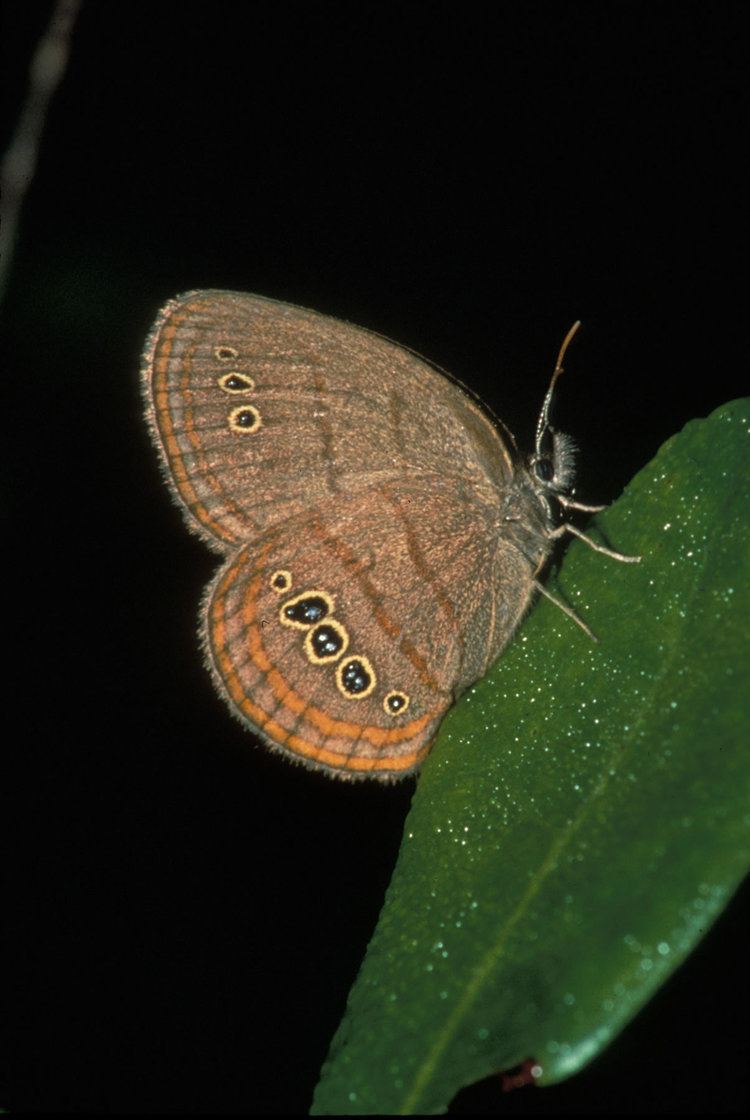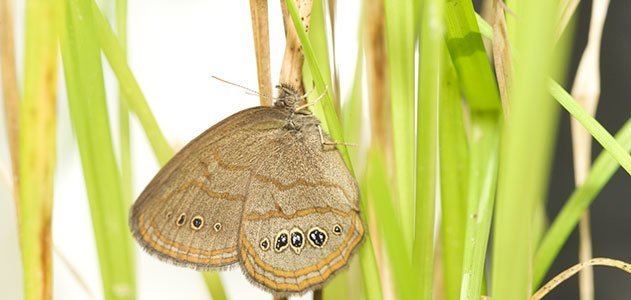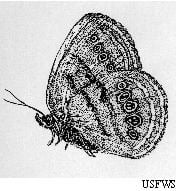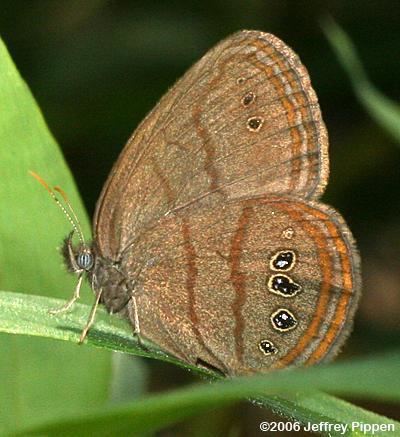Genus Neonympha Order Butterflies and moths | Rank Subspecies | |
 | ||
Similar Neonympha, Neonympha mitchellii, Butterflies and moths, Uncompahgre fritillary, Myrtle's silverspot | ||
The Saint Francis’ satyr (Neonympha mitchellii francisci) is an endangered butterfly found only in North Carolina, USA. First discovered in 1983, it was officially described in 1989 and listed as a federally endangered species by the US Fish and Wildlife Service in 1994. It is a subspecies of N. mitchellii and is only known from a single metapopulation on Fort Bragg military base in Hoke and Cumberland Counties. The other subspecies, Mitchell's Satyr (Neonympha mitchellii mitchellii), is also federally endangered.
Contents

Life History

The St. Francis’ satyr is a small, dark brown butterfly with distinguishing white and yellow spots along the lower surfaces of both upper and lower wings. Females appear slightly larger and lighter brown than males. The average wing span is 34–44 mm. Adults live an average of 3–4 days. The species is bivoltine, with the first flight period occurring from late May to early June, and the second from late July to mid August. Females deposit eggs individually or in small clusters that emerge as larvae in 7–10 days. Caterpillars that emerge in early summer (first flight period) pupate after two months, while those that emerge in late summer (second flight period) overwinter and pupate the following spring. Pupation may take up to two weeks. One known larval host plant is Carex mitchelliana, although it is likely that other sedges in the Carex genus may also act as host plants.
Distribution

The estimated population size of St. Francis’ satyr ranged between 500-1400 adult individuals in annual surveys from 2002-2005. The population consists of a number of highly fragmented sites, typically small (0.2-2.0 ha) in size. It is assumed that these sites, or subpopulations, are part of one population found in a range that is approximately 10x10 km at Ft. Bragg. Most active sites are found in restricted areas on base, and there may be more active sites within these areas in places that can likely never be accessed. No populations have yet been detected outside of Department of Defense (DoD) lands on Ft. Bragg. All locations are kept confidential among researchers and some military personnel. Over-collection of the species for commercial gain is considered a high threat to this butterfly.
Taxonomy

Following its discovery, the St. Francis’ satyr was listed as a subspecies of the Mitchell’s satyr (Neonympha mitchellii) complex. The nominate species is N. m. mitchellii, which is distributed sparsely in the mid- and eastern US, including in Michigan, Alabama, Mississippi, and Virginia, and formerly in New Jersey. Although the Alabama, Mississippi, and Virginia populations are morphometrically similar to St. Francis’ satyr, current molecular evidence supports that they are distinct from St. Francis’ satyr, and that St. Francis’ satyr should remain as a separate subspecies from all other populations in the Neonympha complex with potential elevation to full species status pending further analysis.
Habitat
St. Francis’ satyr is found in wetland habitat dominated by graminoids and sedges. Most subpopulations are found in abandoned beaver dams or along streams with active beaver complexes. Suitable habitat is highly susceptible to variation in rainfall and subpopulations can be reduced with too much or too little water flow. St. Francis’ satyr cannot survive in sites that are either inundated by flooding or succeed to riparian forest, thus population persistence often depends on disturbance by beaver and periodic fire that eliminates encroaching woody shrubs and trees. Past management practices of beaver eradication and fire suppression have likely contributed to current low population abundances and restricted distribution.
In 2011 Ft. Bragg began to restore critical habitat for the St. Francis’ satyr through a combination of hardwood removal and inundation via artificial dams to mimic natural beaver and fire disturbance. Restoration efforts have led to an increase in population size at restored sites.
